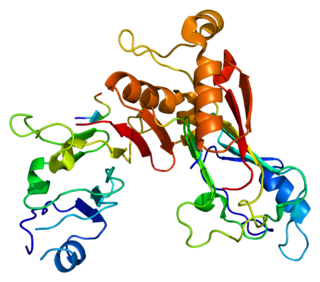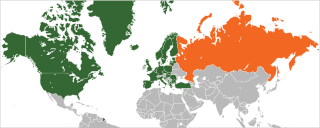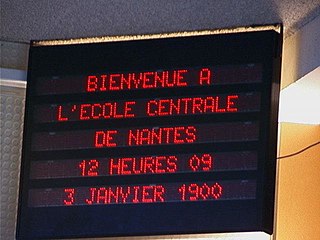Related Research Articles

The Pakistan Armed Forces are the military forces of Pakistan. It is the world's sixth-largest military measured by active military personnel and consist of three formally uniformed services—the Army, Navy, and the Air Force, which are backed by various constitutionally−sanctioned paramilitary forces. According to Global Firepower, the Pakistan Armed Forces are ranked as the 9th most powerful military in the world. A critical component to the armed forces' structure is the Strategic Plans Division Force, which is responsible for the maintenance and safeguarding of Pakistan's tactical and strategic nuclear weapons stockpile and assets. The President of Pakistan is the Commander-in-Chief of the Pakistan Armed Forces and the chain of command is organized under the Chairman of the Joint Chiefs of Staff Committee (JCSC) alongside the respective Chiefs of staffs of the Army, Navy, and Air Force. All branches are systemically coordinated during joint operations and missions under the Joint Staff Headquarters (JSHQ).

Los Alamos National Laboratory is one of the sixteen research and development laboratories of the United States Department of Energy (DOE), located a short distance northwest of Santa Fe, New Mexico, in the American southwest. Best known for its central role in helping develop the first atomic bomb, LANL is one of the world's largest and most advanced scientific institutions.

In nuclear ethics and deterrence theory, No first use (NFU) refers to a type of pledge or policy wherein a nuclear power formally refrains from the use of nuclear weapons or other weapons of mass destruction (WMDs) in warfare, except for as a second strike in retaliation to an attack by an enemy power using WMDs. Such a pledge would allow for a unique state of affairs in which a given nuclear power can be engaged in a conflict of conventional weaponry while it purposefully foregoes any of the strategic advantages of nuclear weapons, provided the enemy power does not possess or utilize any such weapons of their own. The concept is primarily invoked in reference to nuclear mutually assured destruction but has also been applied to chemical and biological warfare, as is the case of the official WMD policy of India.

ITER is an international nuclear fusion research and engineering megaproject aimed at creating energy by replicating, on Earth, the fusion processes of the Sun. Upon completion of construction of the main reactor and first plasma, planned for late 2025, it will be the world's largest magnetic confinement plasma physics experiment and the largest experimental tokamak nuclear fusion reactor. It is being built next to the Cadarache facility in southern France. ITER will be the largest of more than 100 fusion reactors built since the 1950s, with ten times the plasma volume of any other tokamak operating today.

The Akula class, Soviet designation Project 971 Shchuka-B are a series of fourth generation nuclear-powered attack submarines (SSNs) first deployed by the Soviet Navy in 1986. There are four sub-classes or flights of Shchuka-B, consisting of the original seven Project 971 boats, commissioned between 1984 and 1990; six Project 971Is, commissioned between 1991 and 2009; one Project 971U, commissioned in 1995; and one Project 971M, commissioned in 2001. The Russians call all of the submarines Shchuka-B, regardless of modifications.

The Joint Institute for Nuclear Research, in Dubna, Moscow Oblast, Russia, is an international research center for nuclear sciences, with 5500 staff members including 1200 researchers holding over 1000 Ph.Ds from eighteen countries. Most scientists, however, are eminent Russian scientists.

Russia and the United States maintain one of the most important, critical and strategic foreign relations in the world. Both nations have shared interests in nuclear safety and security, nonproliferation, counterterrorism, and space exploration.

Jack Foust Matlock Jr. is an American former ambassador, career Foreign Service Officer, a teacher, a historian, and a linguist. He was a specialist in Soviet affairs during some of the most tumultuous years of the Cold War, and served as the U.S. Ambassador to the Soviet Union from 1987 to 1991.

V-erbA-related protein 2 (EAR-2) also known as NR2F6 is a protein that in humans is encoded by the NR2F6 gene. V-erbA-related protein 2 is a member of the nuclear receptor family of intracellular transcription factors. It is named after its similarity to v-erbA, a helper of an oncoprotein called v-erbB in avian erythroblastosis virus.

The photoreceptor cell-specific nuclear receptor (PNR), also known as NR2E3, is a protein that in humans is encoded by the NR2E3 gene. PNR is a member of the nuclear receptor super family of intracellular transcription factors.

Nuclear pore complex protein Nup98-Nup96 is a protein that in humans is encoded by the NUP98 gene.

3α-Hydroxysteroid dehydrogenase is an enzyme that in humans is encoded by the AKR1C4 gene. It is known to be necessary for the synthesis of the endogenous neurosteroids allopregnanolone, THDOC, and 3α-androstanediol. It is also known to catalyze the reversible conversion of 3α-androstanediol (5α-androstane-3α,17β-diol) to dihydrotestosterone and vice versa.

India–Russia relations are the bilateral relations and overall international policies between the Republic of India and the Russian Federation. During the Cold War, India and the Soviet Union (USSR) formed a strong and strategic relationship; this diplomatic unity was further strengthened with both nations’ shared military ideals, as well as their overall economic policies. After the dissolution of the Soviet Union, Russia kept the same close ties to India; in international terms, both nations share a special relationship. Russia and India, both, consider their mutual affinity to be a "special and privileged strategic partnership".

Relations between the NATO military alliance and the Russian Federation were established in 1991 within the framework of the North Atlantic Cooperation Council. In 1994, Russia joined the Partnership for Peace program, and through the early-2010s NATO and Russia signed several additional agreements on cooperation.

The year 2000 problem, also known as the Y2K problem, Y2K scare, millennium bug, Y2K bug, Y2K glitch, Y2K error, or simply Y2K refers to potential computer errors related to the formatting and storage of calendar data for dates in and after the year 2000. Many programs represented four-digit years with only the final two digits, making the year 2000 indistinguishable from 1900. Computer systems' inability to distinguish dates correctly had the potential to bring down worldwide infrastructures for industries ranging from banking to air travel.

The Korean Armistice Agreement is an armistice that brought about a complete cessation of hostilities of the Korean War. It was signed by United States Army Lieutenant General William Harrison Jr. and General Mark W. Clark representing the United Nations Command (UNC), North Korea leader Kim Il-sung and General Nam Il representing the Korean People's Army (KPA), and Peng Dehuai representing the Chinese People's Volunteer Army (PVA). The armistice was signed on 27 July 1953, and was designed to "ensure a complete cessation of hostilities and of all acts of armed force in Korea until a final peaceful settlement is achieved."

Yuri Tsolakovich Oganessian is a Russian-Armenian nuclear physicist who is considered the world's leading researcher in superheavy chemical elements. He led the discovery of many elements in the periodic table. He succeeded Georgy Flyorov as director of the Flerov Laboratory of Nuclear Reactions at the Joint Institute for Nuclear Research in 1989 and is now its scientific leader. The heaviest element known in the periodic table, oganesson, is named after him, only the second time that an element was named after a living person.

United Nations Security Council Resolution 2375 was adopted on 11 September 2017. The United Nations Security Council unanimously adopted a new sanctions resolution against North Korea, a response to its sixth nuclear test on September 3. The resolution reduces about 30% of oil provided to North Korea by cutting off over 55% of refined petroleum products going to North Korea.
References
- ↑ Brewin, Bob (March 4, 1999). "U.S./Russian Y2K center to avoid nuclear exchange". CNN . Retrieved January 11, 2017.
- ↑ "US detects Russian missiles". BBC News. December 31, 1999. Retrieved January 11, 2017.
- ↑ "U.S., Russia Shutter Joint Y2k Bug Center". Chicago Tribune . January 16, 2000. Retrieved January 28, 2017.